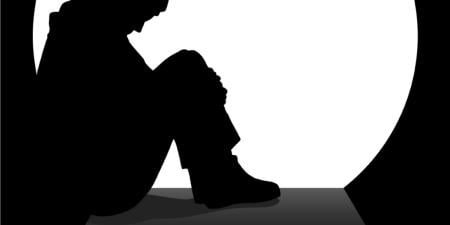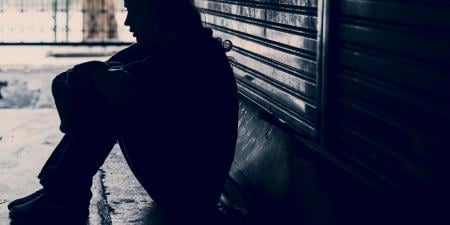In the final year of my internal medicine residency at Massachusetts General Hospital (MGH), the chief of medicine, Dr. John Potts, called me into his office following rounds. He and Dr. Tom Durant, who was well-known and admired throughout the hospital, presented me with a…“request.” They had been involved in a citywide coalition that had funds to take care of homeless people. The coalition of community and homeless people were adamant that they needed a full-time paid doctor (rather than a volunteer) to work with the nurses, but they had been unable to find one. Drs. Potts and Durant had decided that the physician should be MGH's contribution to program, and they were trying to find a doctor willing to do it. They zeroed in on me, arguing that it would be something good to do for a year, like urban Peace Corps. Having graduated from college in the late 1960s, I had a consciousness hangover and thought it would be a great job to take for a year. Dr. Potts agreed to defer my fellowship in oncology for a year, so it wasn't as though I was giving it up, just delaying it.
The grant funding from the Robert Wood Johnson Foundation established our Boston HealthCare for the Homeless Program (BHCHP), and it has been my full-time job for the past 23 years. I am also an attending physician for MGH, and BHCHP has had a daily clinic at MGH since 1985. Whereas most clinicians volunteer to help poor, indigent, or homeless patients, I am blessed to be paid to do work that I love.
Illness Exacerbated by Homelessness
I think everyone who works with homeless people finds that it is complicated medicine. One of the first discoveries you make is that people have chronic illnesses that have been neglected for a long time—hernias have been ignored for many years, hypertension has been out of control and unknown for many years, diabetes not yet diagnosed or treated. When I first started, HIV was beginning to affect the homeless population also. I had loved practicing medicine at an academic teaching center, so I was surprised by how consuming and rewarding my new practice was.
Not long after discovering the chronic illnesses homeless patients have, I became fascinated by the social determinants of health and illness. When caring for someone with no home, no place to go, and nowhere to store medications, the obstacles to treatment can be overwhelming. You are galvanized to take action to reduce those obstacles and change social policy for people who are so vulnerable. But failed policy is, in fact, failure in so many sectors of our society—education, corrections, health care, and social services. Inadequacies in each of these areas have allowed homeless people to fall through the cracks. Fixing the problem is a big job, and one doctor is just one small voice.
I've watched many doctors and nurses become discouraged at this point—wanting to take care of someone but feeling they are swimming uphill. Then, after 6 months or so, you realize that your patients are amazing people with stories of unbelievable courage who are dealing with circumstances you can barely imagine—and who are depending on you to be their doctor. This is when the job starts to grab you. Utterly and quietly I realized that I was attached to the people I was caring for and that I wasn't going to be practicing oncology in an academic hospital any more. I would take care of my patients' suffering today and do what I could to alleviate its social sources where possible.
The common illnesses of homeless people are often magnified by their circumstances. In diabetes, for example, which is so common in medicine and primary care, exercise and diet control are standard management approaches. People living in the shelter have no way to control their diabetes because the meals given to them are typically high in calories and carbohydrates. If insulin is needed, many of the shelters in Boston do not allow needles inside the building. We've had to design therapies for diabetes that respect the situations people are living in. This is an example of a common illness that becomes far more complicated to treat when homelessness is in the mix.
Tuberculosis is another example. One of our shelters had an outbreak of 100 active cases of pulmonary TB. When that occurred, I suddenly realized that I was in public health medicine where the care of one person had a direct effect on the care of the others living in the shelter.
In 1985 we saw the first case of HIV or AIDS in the shelter. By the end of the first year, we had 100 cases, and the numbers were escalating. In those days there was no effective medication. We didn't really know what the virus was and could only treat the complications. It was a losing battle; almost everyone died. That management of the illness was so difficult just made us want to work harder.
We see pellagra and vitamin deficiencies such as scurvy in our patients that are rare in populations that have regular access to good food and nutrition. But the conditions most emblematic of homelessness are frostbite and hypothermia. Most of the care of frostbite occurs at home and not in the hospital. But every winter we treat many people with frostbite of their fingers and toes, while the long process of auto-amputation continues. With my patients' permission I have taken pictures to show medical students and other doctors what this horrifying process looks like. I'm embarrassed to admit that I am expert in the care of frostbite—embarrassed because it's a completely avoidable condition that results in loss of digits and parts of the body. It occurs every winter in most of our big cities in the Northeast and probably in the rest of the country.
The Success of the Boston HealthCare for the Homeless Program
BHCHP was put together by a coalition of homeless people, community activists, and shelter providers who were suspicious of the medical community. When the grant came to Boston, they feared that the doctors would decide what they wanted to do and just do it. The coalition wanted to have a full stake in what was going on, and they embraced the concept that health care was a matter of social justice, not charity. The coalition members did not want to use volunteers because they wanted continuity of care delivered by full-time doctors who would be available to see their patients the same way we expect our primary care doctors to be available for us. They also insisted that we set up a system that was not separate from mainstream health care. The full-time doctors who saw homeless people in the shelter and streets were to be part of the hospital. When I go to take care of someone under a bridge, I'm an MGH doctor and that patient is an MGH patient. I think the insistence of the community on this point has allowed us to grow in a way that none of us predicted.
I fought against the plan for a while because it meant, for one thing, that we couldn't use medical students. In the view of coalition members, allowing medical students to care for homeless people was tantamount to experimenting on our patients. They made sure that we set up a system in which full-time clinicians worked in teams with doctors, nurse practitioners, physician assistants, nurses, and social workers so that a continuous infrastructure was in place. And finally, they said nothing changes unless health professionals learn to create one-on-one relationships with patients. The thrust of the program was getting clinicians out of the traditional clinical sites to places where they could meet homeless people, get to know them, and parlay that relationship into good primary and preventive care. In retrospect, their demands were brilliant. I am so glad that I wasn't the one establishing the program; I would have built something totally different.
We now have 17 doctors, 35 nurse practitioners, and 60 nurses, most of whom are full-time. We have three hospital clinics and 75 clinics in shelters and community sites familiar to homeless people. We have a street team and a racetrack team, and we pretty much get ourselves to wherever homeless people are. Everyone is on the same electronic record, and all of the people we see outside are automatically patients of Boston Medical Center or MGH once we see them.
Lastly and importantly, we have a respite care program, the McInnis House, named after Barbara McInnis, a nurse who was our inspiration. In 1985 people who stayed in shelters had to leave early in the morning and could not come back until late afternoon. Homeless advocates pointed out that when people are sick with the flu or suffering from back pain, it's hard to go to the streets and walk around until 4:30 in the afternoon. They gave us the task of designating a portion of the shelter for beds so that people who were sick had a place to stay during the day.
When we started the respite program in 1985, Dr. Janelle Goetcheus (who founded Christ House) and David Hilfiker (who later founded Jose ph's House) were involved in similar efforts in Washington, D.C. In those days, people who had coronary artery bypass grafts (CABG) stayed in the hospital for 1 month to 5 weeks. Today a patient stays an average of 3.6 days after CABG. The acuity of “home” care escalated as lengths of hospital stay declined, and demands on our program grew. We had to keep adjusting to meet that new level of care. Many surgical procedures that were once done in the hospital are now performed as day surgery. For homeless people who have no place to recover or receive pre- and post-operative care, our respite programs fill that gap. We bring people in the day before, transfer them to the hospital for surgery, pick them up afterward, and bring them back to respite care.
In 1992 we bought an old nursing home to accommodate the growing need for respite care, and we have gradually expanded from 52 beds to 72 beds to 90 beds. In 2008 we moved into a newly renovated building and expanded to 104 beds. The respite program has given us a unique place within the medical community in Boston. Every hospital sends people from the wards into the McInnis House for continuing care or from the emergency room when they don't want to admit someone but are afraid to send him or her out. When I see someone on the street who is in danger of developing frostbite, I am able to admit that person to McInnis for 24-hour medical and nursing care. McInnis House has become a national leader in the development and evolution of medical respite care for vulnerable homeless people and has helped us to integrate medical, mental, and oral health care of homeless persons.
Educating Medical Students to Care for Homeless People
When I was training at Harvard from 1978 to 1982, one had to be really creative to find opportunities for community service. In the past 10 to 20 years, medical schools have done a remarkable job in reaching out to their communities. Time available to spend in the community during medical school is limited, and it can be even more limited during residency. The key is to make service a part of the curriculum and an acknowledged activity that is expected of future physicians and medical students. We still have a long way to go, but things have certainly changed for the better.
Some students who come to BHCHP don't feel comfortable in the shelter, but are fully at ease in other settings, such as a community health center in a Latino neighborhood. I believe each of us needs to find a place of comfort. There are many fascinating opportunities out there. Each student should cherish the reasons for becoming a doctor and not succumb to the pressure to specialize in fields where the hours are limited and the money is not. Great satisfaction can be found in caring for people who are vulnerable, appreciate what you're doing, and invite you into their lives. Some people are drawn to international care or global health, while others have flourished in community health centers and homeless programs. I urge students to explore serving different populations and discover the places where their hearts and minds are at ease.



